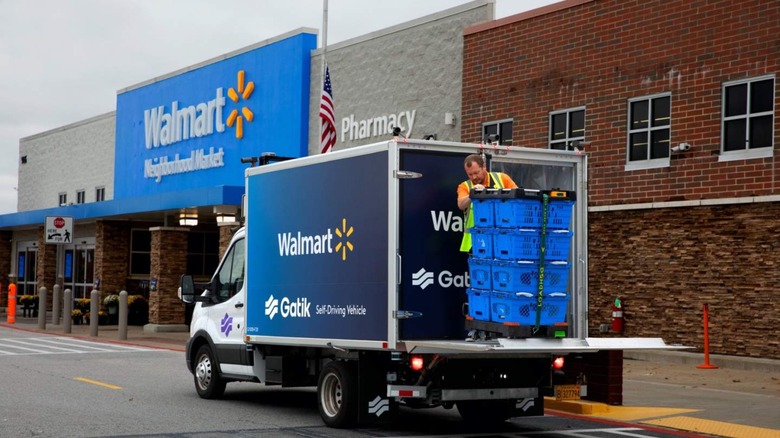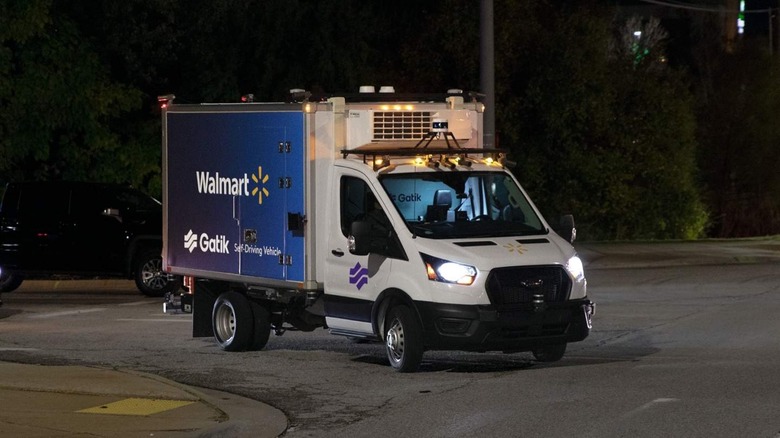Walmart's Robotrucks Are Already Making Deliveries - But Not How You Might Think
Walmart is already using autonomous delivery vehicles without safety drivers, the retail behemoth revealed today, though don't expect one to turn up outside your house any time soon. Instead, the fully driverless trucks – which have been operating for several months now – are filling in an altogether more predictable route, shuttling groceries between a fulfillment center and a nearby grocery store.
In total, the route is a 7 mile roundtrip, Walmart says. Two autonomous box trucks run it on twelve hour-long shifts, bringing in items purchased in online orders from the fulfillment center, and dropping them off at a Bentonville, Arkansas Walmart Neighborhood Market store.

To run the trial, which has seen vehicles without safety drivers on the road since August 2021, Walmart partnered with autonomous truck startup Gatik. News of that collaboration was announced back in December 2020, though details on the exact locations the vehicles would serve were unknown at the time. The Arkansas State Highway Commission gave the trial its blessing, though it was only over the summer that the safety operators were removed from the vehicles.
"Through our work with Gatik, we've identified that autonomous box trucks offer an efficient, safe and sustainable solution for transporting goods on repeatable routes between our stores," Tom Ward, senior Vice President of last mile at Walmart US, said in a statement today.
Walmart has been relatively aggressive in exploring new delivery options, working with a number of different companies on ways to remove human operators from vehicles. A collaboration with Ford and Argo AI, announced earlier this year, aims to have driverless cars bring groceries to customers' door. Where Gatik's technology sets itself apart is in its focus on the so-called "middle mile" of deliveries. That's the portion of the supply chain route where groceries and other items are distributed from more centralized stores to retail locations.

Though it means the autonomous vehicles won't come into contact with end customers – beyond potentially sharing the road with them – it does make the task of designing a safe driverless van a little more approachable. While the route the Walmart trucks take do include intersections, traffic lights, and navigating dense urban roads, it's a fixed path rather than one which has to accommodate every possible roadway in a city.
"Gatik focuses exclusively on fixed, repeatable delivery routes to maximize safety, using proprietary, commercial-grade autonomous technology that is purpose built for B2B short-haul logistics," the company explains. "By constraining the operational design domain, Gatik has been able to achieve the safe removal of the safety driver much more quickly compared to other applications, such as passenger transportation or B2C delivery."
For Walmart, part of the appeal is that it no longer has to dedicate human drivers to the repetitive route. Instead, it can focus on the logistics at either end of the vans' journey: loading up according to the requirements of the online orders, and then unloading them and sorting them as appropriate at the other end. While the current implementation may only involve two trucks, the goal is an expansion as Walmart attempts to better optimize its supply chain process.
